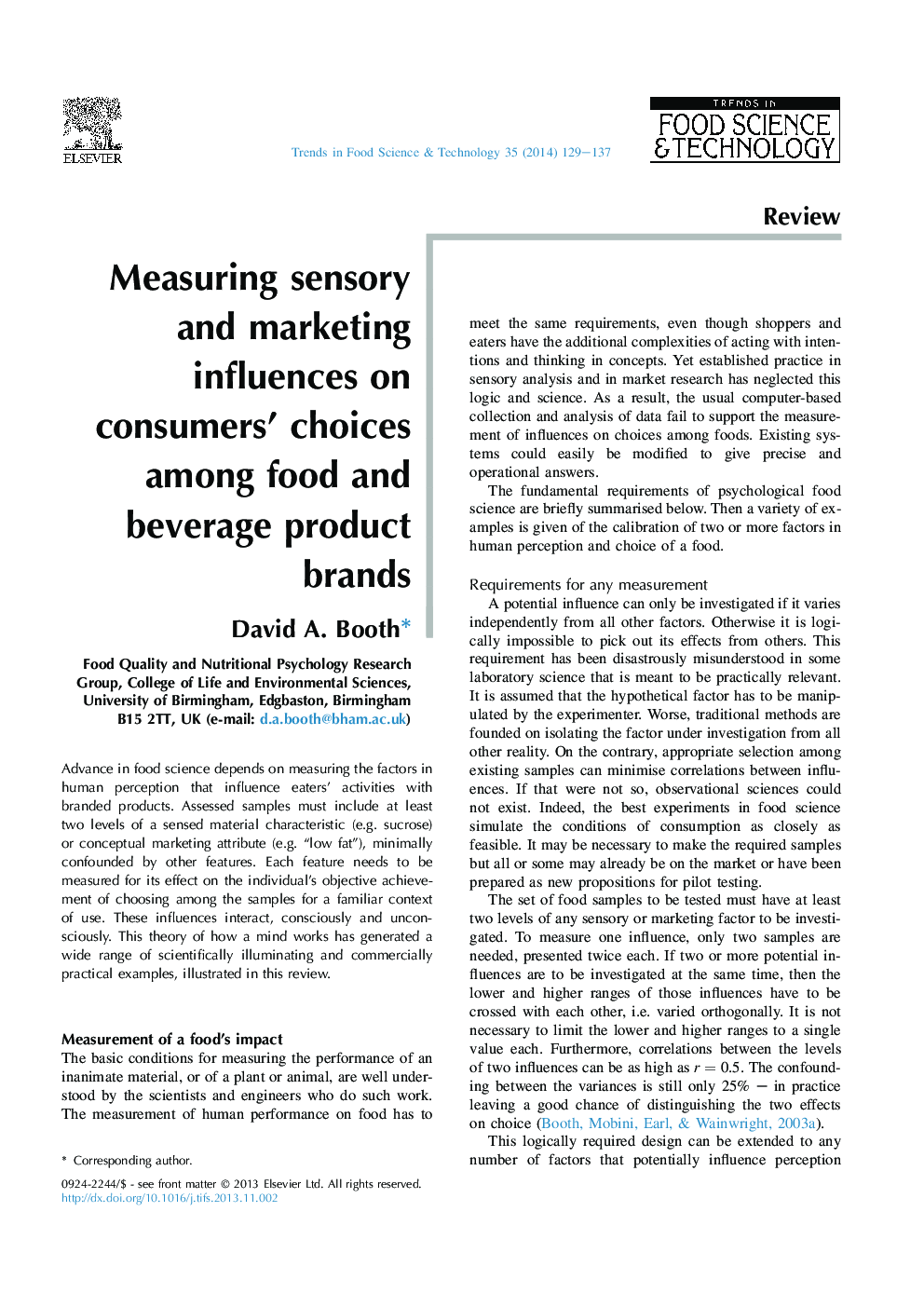| Article ID | Journal | Published Year | Pages | File Type |
|---|---|---|---|---|
| 2098715 | Trends in Food Science & Technology | 2014 | 9 Pages |
•Food perception and preference require scientific measurement, not statistical modelling.•Assessed samples must have tolerable known levels of each sensory and marketing factor.•Correlations between factors need to be minimized for their effects to be separated.•Assessors anchor their responses on the perfect match to a familiar target or the personal ideal.•The result is appropriate levels of physicochemical measurements and marketing concepts.
Advance in food science depends on measuring the factors in human perception that influence eaters' activities with branded products. Assessed samples must include at least two levels of a sensed material characteristic (e.g. sucrose) or conceptual marketing attribute (e.g. “low fat”), minimally confounded by other features. Each feature needs to be measured for its effect on the individual's objective achievement of choosing among the samples for a familiar context of use. These influences interact, consciously and unconsciously. This theory of how a mind works has generated a wide range of scientifically illuminating and commercially practical examples, illustrated in this review.
